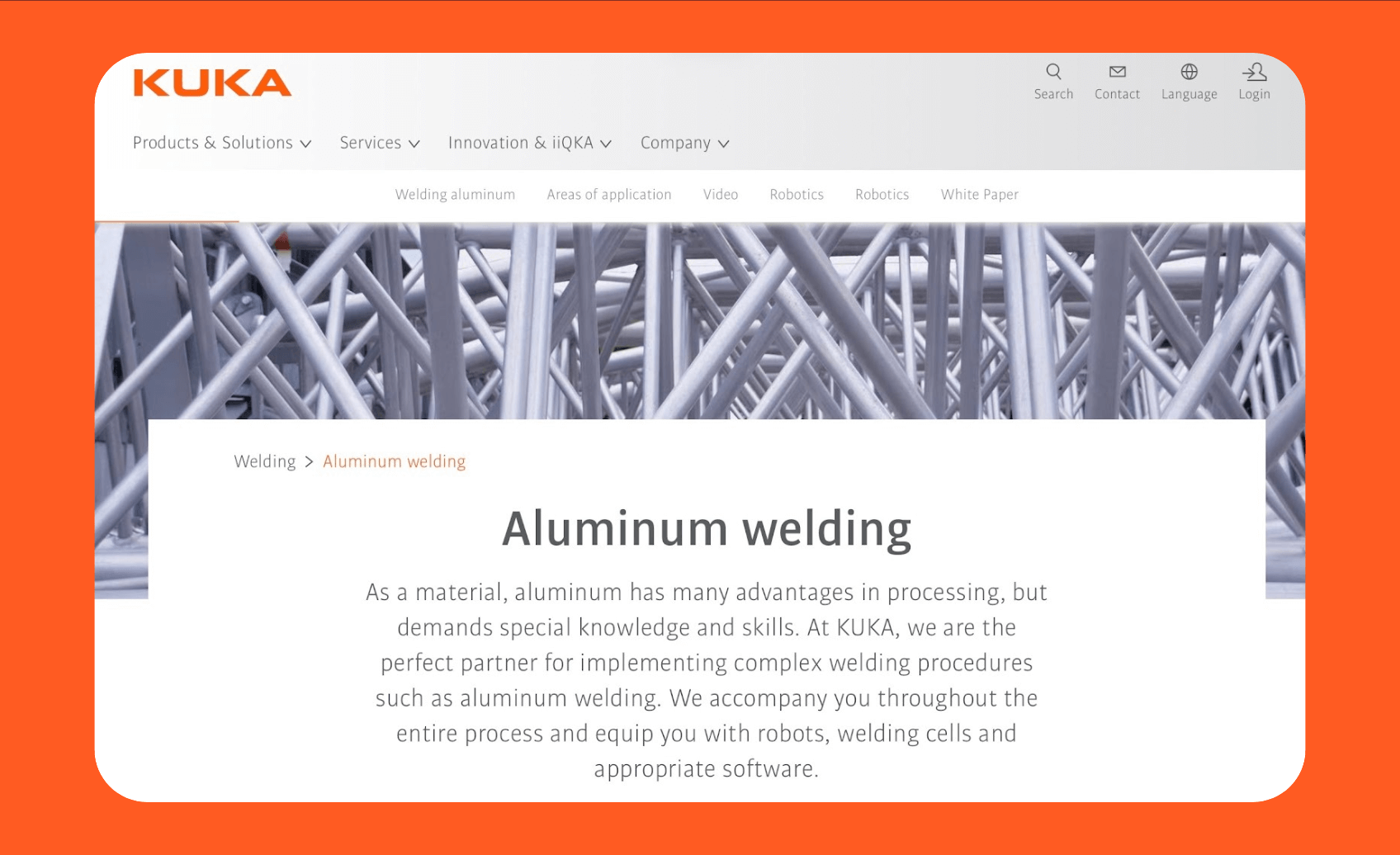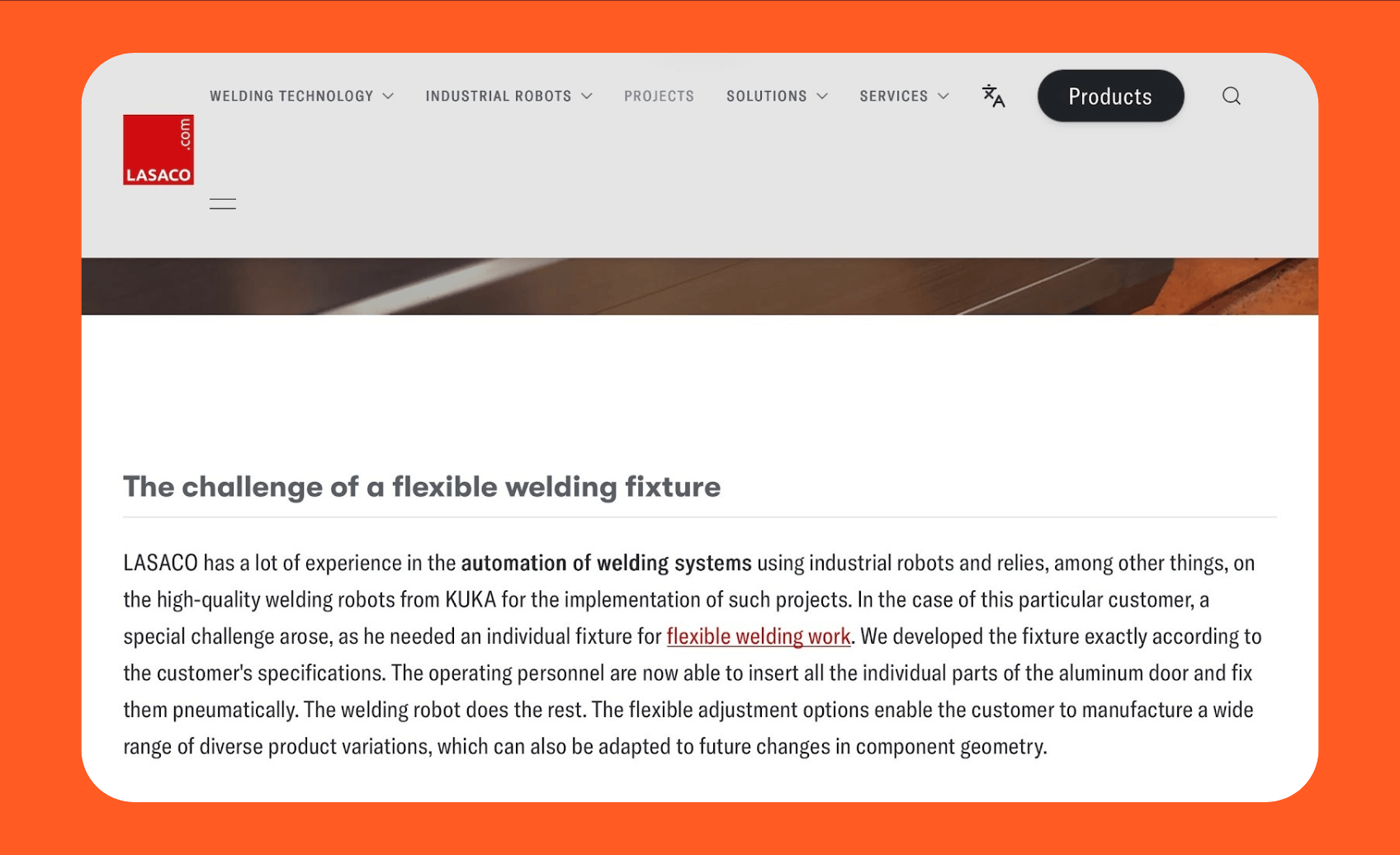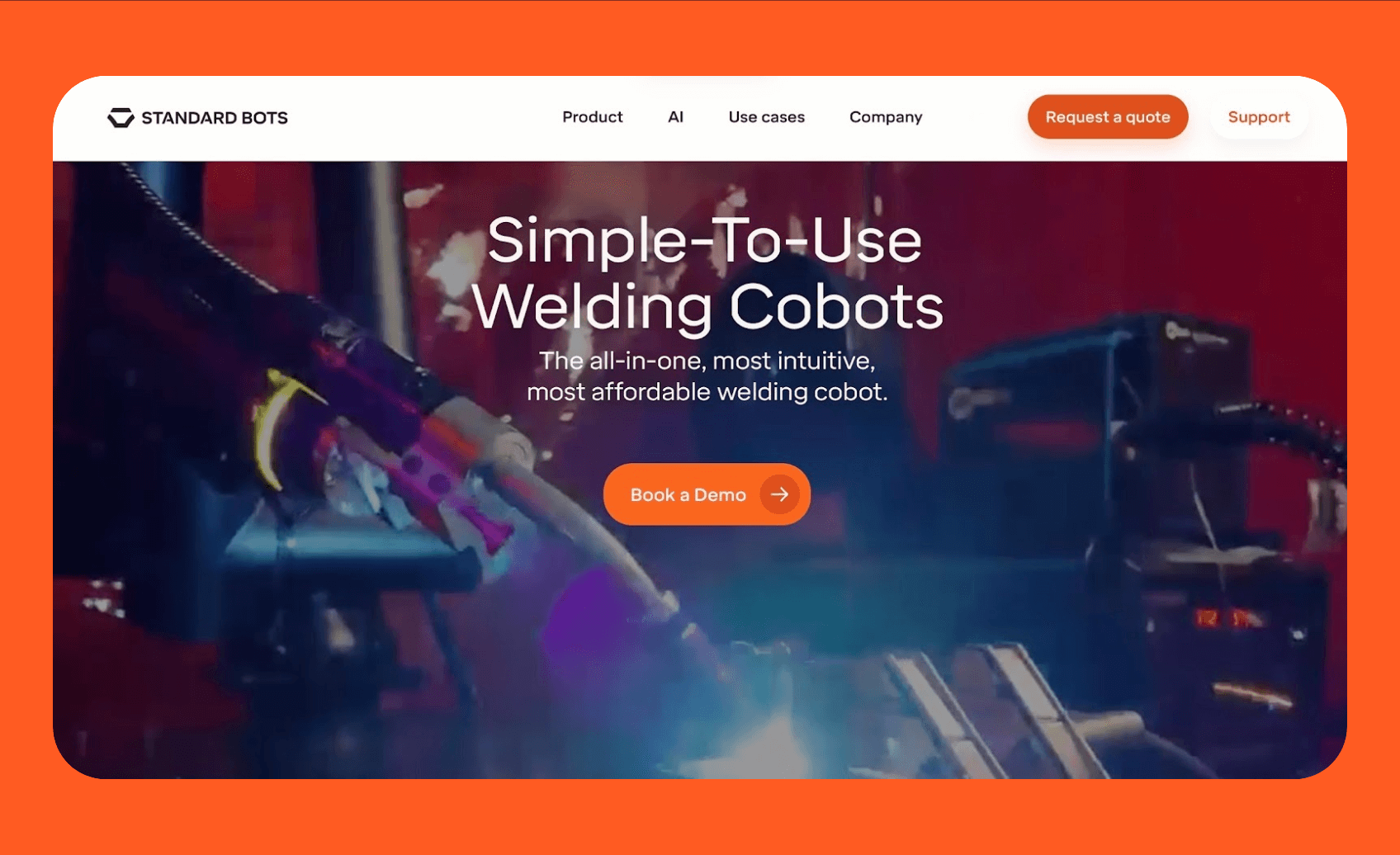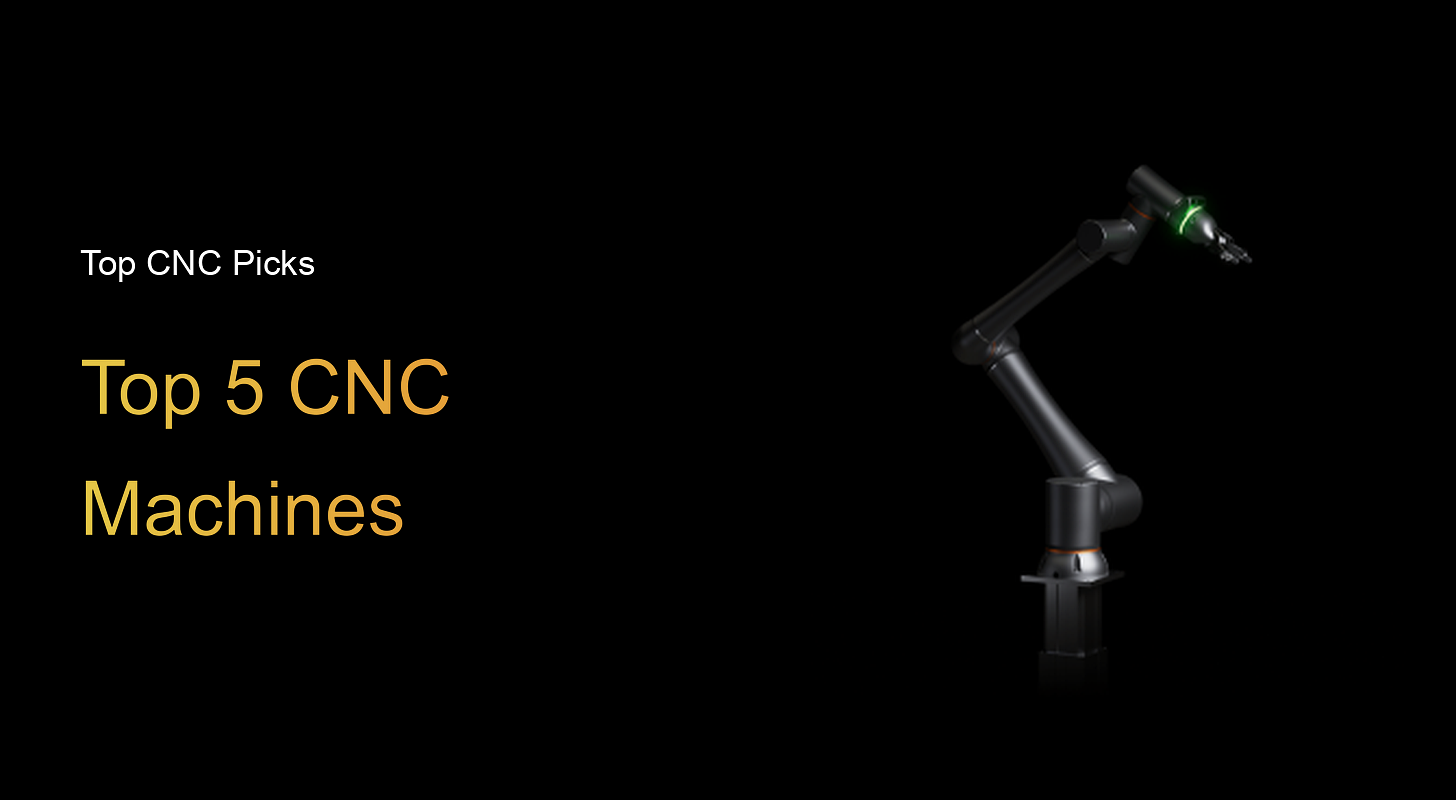Aluminum robotic welding is becoming the go-to solution for industries focused on lighter, stronger designs. In aerospace and automotive manufacturing, every ounce saved improves performance and efficiency.
But aluminum is tricky because it conducts heat fast, distorts easily, and forms a stubborn oxide layer. Skilled welders are rare, and consistency is hard to maintain. That is where MIG robotic welding delivers repeatable precision, faster cycles, and fewer scrap parts.
Steps to automate aluminum MIG welding: TL;DR
- Choose a robot with the right payload and reach for aluminum MIG welding.
- Design a clean, well-fixtured cell with proper ventilation and isolation.
- Use a push-pull or spool-on-gun wire feeding system for smooth delivery.
- Calibrate current, voltage, and travel speed for stable aluminum welds.
- Add sensors and quality-control tools for consistent, repeatable results.
What is aluminum robotic welding?
Aluminum robotic welding is an automated MIG welding process that uses programmable robots to perform high-precision welding on aluminum components. It overcomes challenges such as aluminum's high thermal conductivity and oxide formation through the use of specialized equipment and programming.
For years, welding aluminum with a MIG welder was tricky because soft wire, high heat input, and oxide buildup all caused headaches. Now, automated welding robots can manage those variables with push-pull wire systems, pulsed spray transfer, and precise motion control.
This evolution has turned aluminum MIG welding from a difficult manual skill into a reliable, scalable process that manufacturers can confidently use in production.
How to automate aluminum MIG welding
Automating aluminum MIG welding means selecting the right robot, designing a cell that keeps production flowing, and building in the controls that handle aluminum's quirks.
Step 1: Assess your application and choose the right robot: Start by mapping what you are welding: part geometry, thickness, weld type, and volume. Aluminum’s high heat conductivity and distortion risk require a robot with at least 10–20 kg payload for MIG torches and sensors. Choose cobots for flexible cells or industrial arms for 24/7 output.
Step 2: Design the welding cell: Lay out a dedicated aluminum welding area with stable fixturing, fume extraction, and clean wire storage. Include space for feeders, power sources, and shielding gas cylinders. Keep aluminum away from steel stations to prevent contamination.
Step 3: Set up the right wire feeding system: Use a push-pull or spool-on-gun wire system. Aluminum wire is soft and tends to jam, so the dual-drive setup keeps tension even and ensures smooth feeding. For longer torch distances, a push-pull system is the best choice.
Step 4: Calibrate parameters for aluminum: Fine-tune current, voltage, travel speed, and torch angles. Use pulsed spray transfer for thin sections and consistent penetration. Test weld samples before production to validate settings against your required bead geometry and penetration depth.
Step 5: Integrate monitoring and quality control: Use sensors and vision systems to monitor bead quality and detect deviations in real time. Adaptive seam tracking helps maintain accuracy during part distortion or misalignment.
Basics of aluminum welding
The basics of aluminum welding come down to understanding how its material properties differ from steel and how those differences affect weld quality. Aluminum conducts heat faster, expands more, and forms a stubborn oxide layer that makes the process trickier without proper preparation and control.
In short, aluminum demands more precision than steel. That’s why using MIG with an automated welding robot helps manufacturers achieve consistency where manual welders often struggle.
Robotic MIG welding for aluminum: Core components and setup
A reliable aluminum MIG cell includes a six-axis robot, a pulsed MIG power source with push-pull or spool-on-gun feeding, water-cooled torches, rigid fixtures/positioners, seam tracking or vision, and safety enclosures tied into the robot controller.
A proper setup includes:
- Welding robot or manipulator: The robot arm must provide enough payload to carry the torch and accessories, along with the reach to access large aluminum parts like frames or panels. Precision also matters as repeatability of fractions of a millimeter ensures every weld starts and finishes in the right spot.
- MIG power source and wire feeder: Aluminum wire is softer than steel, so a simple push system often causes jams. Most setups use push-pull or spool-on-gun systems that maintain tension and smooth delivery. The power source also needs pulsed spray transfer capability to manage heat input.
- End-of-arm tooling: The torch and cooling system are important. Water-cooled torches are common in robotic aluminum welding since they handle high heat better, and smooth wire liners prevent feeding issues.
- Positioners and fixtures: Aluminum’s tendency to distort under heat makes rigid fixturing essential. Positioners allow the robot to approach the weld from the ideal angle, reducing rework and improving penetration.
- Vision and seam tracking: Automated welding robots often integrate sensors or cameras to follow seams in real time. This compensates for part variation and reduces reliance on extremely tight tolerances.
- Safety and integration: A robotic welding cell needs enclosures, fume extraction, and interlocks to meet safety standards. Integration with the robot’s control system ties everything together, from welding parameters to motion programming.
Key techniques and best practices for aluminum robotic MIG
Key techniques and best practices for aluminum robotic MIG focus on controlling heat, wire feeding, and surface preparation. Getting these right ensures your automated welding robot delivers consistent welds without porosity, distortion, or premature failures.
- Push-only travel direction: When welding aluminum with MIG, the torch should always push the puddle forward rather than drag it. This technique improves gas coverage and reduces porosity.
- Surface cleaning and oxide removal: Aluminum forms an oxide layer that melts at a higher temperature than the base metal. Mechanical brushing or chemical cleaning before welding is essential for proper fusion.
- Wire feeding with push-pull systems: Because aluminum wire is soft, push-only feeders often kink or jam. Push-pull or spool-on-gun systems give stable wire feeding and reduce downtime.
- Use of pulsed spray transfer or AC pulsing modes: These advanced modes balance penetration and heat input, helping reduce burn-through and controlling spatter on thin sections.
- Weaving and heat control techniques: Methods like synchro-weave or slope control distribute heat evenly, lowering distortion risks. Some systems use active wire or reciprocation techniques for even greater control.
- Consumable monitoring: Liners, drive rolls, and contact tips wear faster with aluminum wire. Regular inspection and replacement prevent feeding problems and weld defects.
Use case examples and real deployments
Use case examples and real deployments of aluminum robotic welding show how different industries are adapting MIG automation to meet production goals. From large automotive lines to smaller workshops, these deployments show proven results.
KUKA aluminum welding cells

KUKA aluminum welding cells show how robotic MIG and TIG automation have become standard in high-volume industries. Automotive plants use KUKA KR series robots with pulsed MIG power sources to weld car body frames and subassemblies made from aluminum.
These cells integrate seam tracking sensors and adaptive control, ensuring consistent bead placement even when parts vary slightly. In aerospace, KUKA systems handle fuselage panels and lightweight structures where porosity control is important.
Their modular cells allow quick changes between aluminum and steel production, which keeps lines flexible as material trends evolve. This adaptability makes KUKA’s aluminum welding solutions a benchmark for large-scale manufacturing.
Lasaco and KUKA dual-robot gating cell

Lasaco and KUKA dual-robot gating cells demonstrate how advanced integration solves the challenges of welding oversized aluminum parts. Lasaco mounted two KUKA robots on linear tracks to handle structural gates, which are prone to distortion and variation.
With real-time sensor compensation, the robots could scan parts, identify misalignments, and adjust their paths during welding. This eliminated the need for ultra-precise fixturing and reduced rework. The dual-robot setup meant both sides of a large part could be welded simultaneously, cutting cycle times nearly in half.
For manufacturers producing flexible aluminum structures, this deployment shows how combining mobility, sensors, and robotics maximizes throughput without compromising quality.
Standard Bots for aluminum MIG

Standard Bots Core and Thor bring affordable yet high-quality aluminum MIG automation to shops that couldn't justify traditional robotic cells. Core, with its 18kg payload and ±0.025mm repeatability, handles aluminum panels, EV battery housings, and light structural frames. For heavier aluminum work, Thor delivers 30kg payload and 2m reach, tackling larger assemblies and structural components.
Both robots use the same no-code interface that lets operators teach weld paths by guiding the arm.
Most shops go from unboxing to first production weld in days instead of months. The robots repeat the same motion within fractions of a millimeter, keeping heat input stable across every weld and cutting down on the porosity and burn-through that manual welders struggle with on aluminum.
Core comes with built-in 3D vision that compensates for aluminum's thermal expansion and fixturing tolerances. When parts shift between cycles, the robots locate actual seam positions and adjust paths in real time. Core lists at $37k and Thor at $49.5k, both delivering ROI within 18 to 24 months for shops running small to mid-volume aluminum production.
Aerospace and automotive sectors
Aerospace manufacturers rely on MIG robotic welding for fuselage skins, wing structures, and internal supports, where even small defects can cause safety issues. Robots equipped with pulsed MIG and hybrid MIG-laser systems achieve strong, lightweight joints while minimizing distortion.
In the automotive industry, EV makers use automated welding robots to assemble battery enclosures, body-in-white structures, and crash-resistant subframes. Hybrid laser-MIG welding is increasingly common in these sectors because it combines deep penetration with high travel speeds.
Together, aerospace and automotive highlight how welding aluminum with a MIG welder at scale requires robotic precision to meet the tight tolerances these industries demand.
Challenges, risks, and mitigation
Aluminum robotic welding comes with problems you need to solve early: distortion, porosity, wire feeding jams, and consumable wear. Address these upfront with the right process controls and fixturing, or expect costly downtime and scrap parts.
- Distortion and burn-through: Because aluminum expands more than steel, parts can warp or even burn through under high heat. The fix is using pulsed spray transfer or AC pulsing to lower heat input, combined with rigid fixtures that hold parts steady.
- Porosity and weld quality: Trapped gases lead to porous welds, especially if the surface oxide layer isn’t removed. Pre-weld cleaning, proper gas coverage, and pushing the puddle instead of dragging reduce this risk. Seam tracking sensors also help maintain consistent coverage.
- Wire feeding issues: Aluminum wire kinks and jams easily. Push-pull feeders, spool-on-gun systems, and well-maintained liners keep wire feeding stable. Monitoring drive rolls and contact tips prevents mid-cycle stoppages.
- Consumable wear: Contact tips, liners, and drive rolls wear faster with aluminum, so proactive replacement is essential. Many shops set preventive maintenance schedules to swap consumables before failure causes downtime.
- Integration complexity and calibration drift: Robots need precise calibration, and welding cells with multiple devices can be complex to integrate. Using offline programming, adaptive feedback, and routine calibration checks reduces drift and integration errors.
- Safety and fume handling: Aluminum welding generates ozone and other hazardous fumes. A complete robotic welding cell should include enclosures, fume extraction, and interlocks to keep operators safe.
Advanced trends in aluminum robotic welding
Advanced trends in aluminum robotic welding are pushing the process beyond simple automation, combining robotics with smarter controls, hybrid systems, and even AI-driven optimization. These advances make welding aluminum more consistent, faster, and adaptable to new designs.
- Hybrid MIG-laser systems: Manufacturers are pairing MIG with laser welding to achieve deep penetration and high travel speeds while keeping heat input low. This reduces distortion and increases throughput, especially in automotive and aerospace applications.
- Closed-loop adaptive welding: Next-generation robotic cells use sensors to measure arc stability, bead formation, and heat input in real time. The robot then adjusts wire feed, travel speed, or voltage automatically, allowing automatic parameter adjustments.
- AI and sensor-based correction: AI-powered algorithms are now being tested to predict weld defects before they occur. By analyzing sensor feedback, the robot can alter parameters mid-weld, reducing porosity and ensuring consistent quality across variable geometries.
- Online programming and simulation: Robots can now generate weld paths directly from CAD models or digital twins, shortening setup time. This is especially useful for aluminum parts, where tolerances are tight and distortion is common.
- Alternative processes: For some applications, MIG isn’t the only solution. Techniques like friction stir welding are gaining traction for joining thick aluminum plates, offering solid-state bonds with no filler wire. While not universal, they show how the field is evolving beyond traditional arc welding.
Final thoughts
Aluminum robotic welding is a proven way to meet rising demand for lightweight structures in aerospace, EVs, and automotive manufacturing. The combination of MIG automation and robotics solves the toughest aluminum challenges: porosity, distortion, and inconsistent quality from manual processes.
The smartest path forward is to start with pilot projects, dial in fixtures and wire feeding, and then scale once the process is stable. Regular consumable checks, proactive maintenance, and real-time monitoring keep weld quality high and downtime low.
Shops that invest now will be positioned to stay ahead as lightweight materials become the industry standard.
Next steps with Standard Bots’ robotic solutions
Standard Bots Core and Thor are perfect six-axis robot additions to aluminum welding operations, delivering precision and flexibility without traditional robotic cell costs.
- Affordable and adaptable: Core costs $37k. Thor lists at $49.5k. Get high-precision automation at half the cost of comparable robots.
- Precision and power: With repeatability of ±0.025 mm, Core's 18 kg payload and Thor's 30 kg payload handle aluminum welding jobs from panels to structural frames.
- AI-driven simplicity: Equipped with advanced demonstration learning and real-time adaptation through Standard Bots' vertically integrated AI platform, Core and Thor integrate smoothly with manufacturing operations for flexible automation.
- Safety-first design: Machine vision and collision detection mean Core and Thor work safely alongside human operators.
Schedule your on-site demo with our engineers today and see how Standard Bots Core or Thor can automate aluminum MIG welding in your shop.
FAQs
1. Can MIG robotic welding match manual weld quality for aluminum?
MIG robotic welding can match and often exceed manual weld quality for aluminum. Robots maintain precise travel speed, torch angle, and arc length, avoiding porosity and fusion issues. They deliver consistent, fatigue-free welds ideal for industries needing uniform quality, such as automotive and aerospace.
2. Do I need a push-pull wire system for aluminum robotic MIG welding?
You do need a push-pull wire system for aluminum robotic MIG welding because aluminum wire is soft and prone to jams. The dual-motor setup keeps constant tension, ensuring smooth feeding and stable arcs. Spool-on-gun systems work well for shorter wire runs.
3. What thickness range can robotic MIG aluminum welding handle well?
Robotic MIG aluminum welding handles sections from 1.5 to 6 mm best. Thinner sheets risk burn-through, while thicker parts need multiple passes or friction stir welding. Pulsed spray modes extend MIG’s range to about 1 mm with controlled heat and minimal distortion.
4. How do I deal with distortion and shrinkage in aluminum welds?
To deal with distortion and shrinkage in aluminum welds, use tight fixturing, pulsed spray modes, and balanced weld sequencing. These methods spread heat evenly and keep parts aligned. Robotic MIG welding maintains tolerance through precise control and adaptive seam tracking.
5. What maintenance is needed for consumables when welding aluminum?
The maintenance needed for consumables when welding aluminum is more frequent. Soft wire wears liners, drive rolls, and tips faster, so inspect them often. Replace contact tips daily in high-volume cells and keep spare torches ready to minimize downtime.
brighter future
Join thousands of creators
receiving our weekly articles.







.png)


